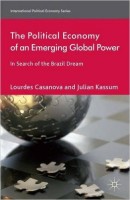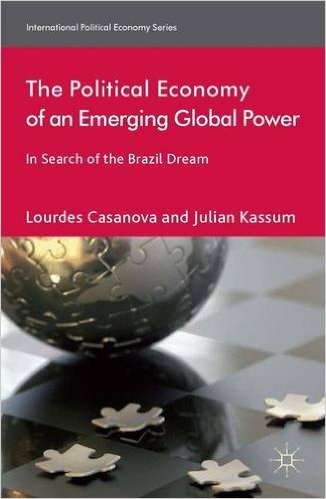 Authors: Lourdes Casanova and Julian Kassum
Authors: Lourdes Casanova and Julian Kassum
Publisher: Palgrave Macmillan – 202 pages
Book Review by: Sonu Chandiram
Brazil was the world’s seventh largest economy in 2014 (latest figures available), with a gross domestic product of $2.353 trillion in nominal terms, according to the International Monetary Fund. The top three were the European Union, the United
States, and China, which had a combined total GDP of $46.232 trillion or nearly 60 percent of total world GDP of $77.269 trillion consisting of 188 nations.
The people of Brazil have been able to achieve fast growth. Its capable decision-makers, democratic institutions, enhanced human capital, and its ample agricultural, energy, and mineral resources are just some of many reasons why Brazil has had great success.
As most of you probably know, Brazil is part of the faster-growing BRIC block which consists of Brazil, Russia, India and China. The total economic output of these four countries was $16.618 trillion, or about a fifth of the world’s total. Except for
China which had a 2014 GDP of over $10 trillion and ranked next only to the United States, the other three had GDPs only in the $1.8 trillion to $2.3 trillion range. Russia had $1.857 trillion and ranked 10th in the world, and India had $2.052 trillion,
ranking 9th.
While there are numerous countries in Asia, Europe, the Middle East, and North America among the top 50 countries in GDP, only five in South America belong to this enviable group: Argentina, Brazil, Chile, Colombia, and Venezuela.
While Brazil’s economy is among the largest in the world, there is a different part of its story which is seldom told: its annual income per person is only $8,802, ranking a low 69th in the world (Luxembourg is No.1 with $103,187 income per person). Part of the reason for Brazil’s relatively lower per capita figure is that it has a huge population: just over 200 million people, fifth in rank after China, India, the U.S. and Indonesia.
The authors of this book tell the story of how Brazil transformed into a leading global economic power, but they also ask the all-important question of whether Brazil can continue its relatively higher economic growth rate compared to the rest of the world or whether it has reached a plateau.
Given the challenges Brazilians are currently facing as well as how they “dream their future,” Casanova and Kassum present an insightful perspective on the situation they are in. They discuss the problems but also present the collective strengths of the people, as well as the opportunities in front of them to raise the standards of living for the broad masses.
In this process, they discuss various topics related to this theme of the prospects for sustained economic growth. We provide you an overview below:
Introduction: Brazil at a Crossroads
- A Champion of Soft Power
- A Friendly Giant
- The Brasilia Consensus: Still a Valid Model
- A Hard Power Nation in the Making
- Brazil’s Economic Power
- Brazilian Companies Going Global
- What Will Propel Brazil Forward?
- Strengthening Brazil’s Competitiveness
- Sustaining Social Innovation
- In Search of a Role On the Global Stage
- Looking for Answers
Conclusion: Building the Brazil Dream
This is a very good book on Brazil.
Authors:
Lourdes Casanova is Senior Lecturer at Johnson Graduate School of Management at Cornell University. Formerly at Institut Europeen d’Administraction des Affaires (INSEAD), she is currently a member of the World Economic Forum’s Global Agenda Council on Latin America and of the ICT Innovation task force of the B20. She is also the author of Global Latinas: Latin America’s Emerging Multinationals (2009).







